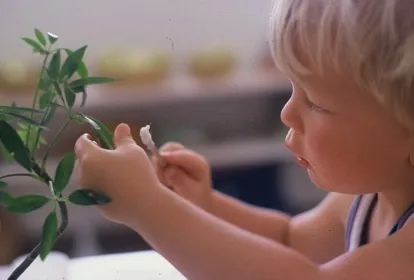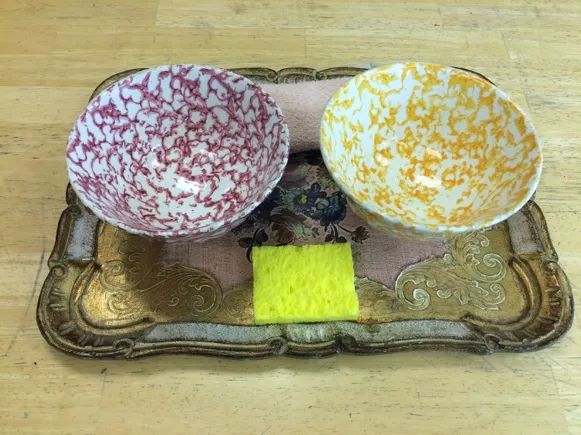Montessori for Early Childhood Homeschool Families
Do it Now!
Do it for your children!
Do it for your own peace of mind!
Thousands of families all over the nation are opting out of traditional public schools. Even more are choosing not to out their young children into preschools. Due to health concerns, political activism in the schools and other personal reasons, many families are looking for the best option for their children elsewhere. Parents realize that it is they, rather than the state, that gets to decide what their children need.
Many families are not able to pay the often-high price of private schools or are on long waiting lists for their child to be accepted. Many would prefer to homeschool or perhaps join a coop of like-minded parents to educate their children the way they want.
Maria Montessori offers the very best options for young children from birth to six. She brings a deep wisdom that transcends the three Rs in education: “Man must be educated to realize his greatness and to become worthy of the powers that are his.” Quite a statement! She believes in your child. She explains that the role of education is to interest the child profoundly in an external activity to which he will give all his potential, in this way forging a strong sense of self as well as mental development. The sequence of materials that she designed that serve to education and expand each child offer such opportunity for full engagement and development.
Age of Montessori is making it possible for YOU to have a Montessori environment in your home without spending thousands of dollars. If you have ever looked at Montessori materials, you know they tend to be well made and expensive. They are designed for many children to use over many decades. If you are working with your child or a small group, you do not need that level of materials – you need what your child needs NOW.
It is the information about child development and understanding how and why children choose the things they choose to work on that will make you an excellent Montessori parent. You can provide materials that are the same or approximate to what is in the finest Montessori schools, at a very low price. As we provide you with instruction on what materials to assemble and what to do with them, you will realize how all this can be adapted to your home and your lifestyle.
Montessori for Ages 2 ½ - 6
Montessori for early childhood is designed around four great avenues of learning. The first is
Practical Life or as we like to call it, “The humble tasks of daily living.” Second is sensorial, regarding the organization and development of the intellect through the senses. The third avenue is the development of language and early reading. The fourth is early development of the mathematical mind, leading up from counting to 10, to the decimal system, and functions of the four operations and beginning memorization of math facts. You will need to assemble, make or purchase some basic materials for activities in these four avenues. We will offer you many language materials to simply download and print for your children.
Practical Life
We begin with Practical Life. The purposes of Practical Life can be summed up in four words, order, coordination, concentration, and independence.
- Order – Internal order is developed as the child learns how to put the materials out in a simple layout that reflects the order in which he needs the materials, and to follow simple sequences, from a few steps to more complex activities of eighty or more steps. Until a child can follow simple sequences and keep order on his table or rug, he is not demonstrating the internal order that makes him ready for more advanced mathematics and language activities.
- Coordination and control of movement – All of our Practical Life activities have as one of their goals the coordination of movement. When you try to build the pink tower for the first time, you may be surprised how much control of movement is needed to wrap an orange stick with cotton and clean an individual leaf with leaf polish!

Coordination of movement, concentration, and tender care for the environment
- Concentration – Concentration is the icing on the cake. It is concentration that leads to normalization, the calming and centering of children who were once unable to concentrate and follow through on anything. Concentration is the first step that Maria Montessori says is always the hallmark of the beginning of that process of centering and developing a peaceful, diligent personality. Concentration becomes so deep that children seem to be oblivious to the other things happening in the environment, and they are fully present with their self-chosen task. What the child precisely is doing is less important that the fact of his self-chosen activity, his internal order, his coordination of movement, and his total concentration.
- Independence – “I can do it all by myself!” This brings children joy and confidence. It makes them want to work and experience more of their own powers.
This week, our offer to you is a compete parents’ guide to Practical Life lessons. This guide is complete with list of materials that you can assemble from home, garage sales or a local Dollar Store. Each lesson includes how to set the materials out and the steps to do with your child, along with the basic purpose and approximate age.
Here is a sample page, adapted for parents from the teacher manuals we provide to our certification students. You see what is offered in each lesson and the simple fact that you can assemble what you need for the lessons from what you have around the house or can easily get.

Sponge Squeezing
Materials: Tray, matching bowls, dry sponge, drying cloth, apron, supply basket with additional dry sponges and drying cloths
Presentation Set-Up:
- Invite the child to the lesson and name it.
- Invite child to put on an apron with you and go to the sink to fill one of the bowls with water.
- Point out line on the inside of the bowl that tells us not to go over it when we fill with water.
Squeezing the Sponge:
- Grasp the sponge with fingertips of dominant hand and lightly drop it into the water.
- Observe the sponge soaking up water. Be patient!
- Pick up the sponge with fingertips and thumbs of both hands, allowing some drips to happen naturally.
- Gently move hands over the empty bowl and squeeze water out with one solid squeeze.
- Repeat the above 4 steps until all the water has been transferred.
- Invite child to have a turn and sponge the water back into original bowl.
- Child may wish to go back and forth several times.
- When finished, take the bowl with water to sink and empty it.
- Go back and place bowl on table.
- Fold drying cloth around fingers; dry each bowl inside and out, holding the bowl on table.
- Wipe up drips from tray and table and return bowls to the tray.
- Invite the child to hang up wet cloth on drying rack. Put a new cloth on tray.
- Replace tray on shelf and return apron.
- Invite the child to use materials whenever desired.
Variation: Natural sponges from the sea may also be used.
Direct Purpose: Learning how to use a sponge, discovering absorption properties of a sponge
Points of Interest: Watching the sponge soak up water, observing water drip from sponge, realizing how much water the sponge can hold
Control of Error: The sponge will not soak up much water if not left in first bowl long enough; water will spill on tray and table if the sponge is not positioned correctly.
Age: 2½ and up
For just $75, we will send you the 64-page parent’s guide for Practical Life and you can start the day you receive it. In the weeks to follow we will be offering you the Sensorial, Language and Math Parent Guides, each at $75.
You may wish to purchase the entire set now for $300 and we will send them out at three -week intervals. For an additional $99 you can have access to an online course of one week that gives you an overview of Montessori’s discoveries about the nature of children and what we can do to assist life within them.






















